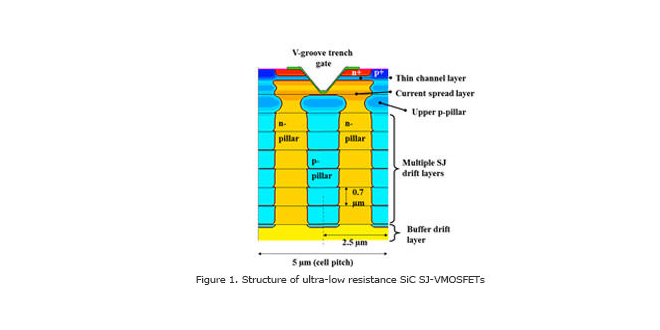Sumitomo Electric’s new V-groove superjunction transistors, which it developed through a joint research project with the National Institute of Advanced Industrial Science and Technology (AIST) use silicon carbide (SiC) semiconductors, and the company claims they offer the lowest on-state resistance yet achieved in an SiC transistor.
Sumitomo has already developed V-groove MOSFETs that use a particular plane orientation (0-33-8) for the channel that turns the flow of electrons on and off, forming an oxide film interface with low defects and achieving a low on-state resistance. According to Sumitomo, the low-defect performance of the VMOSFETs significantly stabilizes the threshold voltage fluctuation that has prevented the practical use of SiC transistors.
Sumitomo has adopted a superjunction structure to reduce on-state resistance. The superjunction structure has been commercialized for silicon transistors, but has remained in a principle verification stage for SiC transistors, due to problems in manufacturing methods. In a recent study, Sumitomo overcame the problems by repeating epitaxial growth and ion implantation to form a narrow-pitch pillar structure, and achieved the SiC superjunction structure for the VMOSFETs. The new transistors have achieved a low on-state resistance of 1,170 V / 0.63 mΩ∙cm2.


Source: Sumitomo Electric




















































